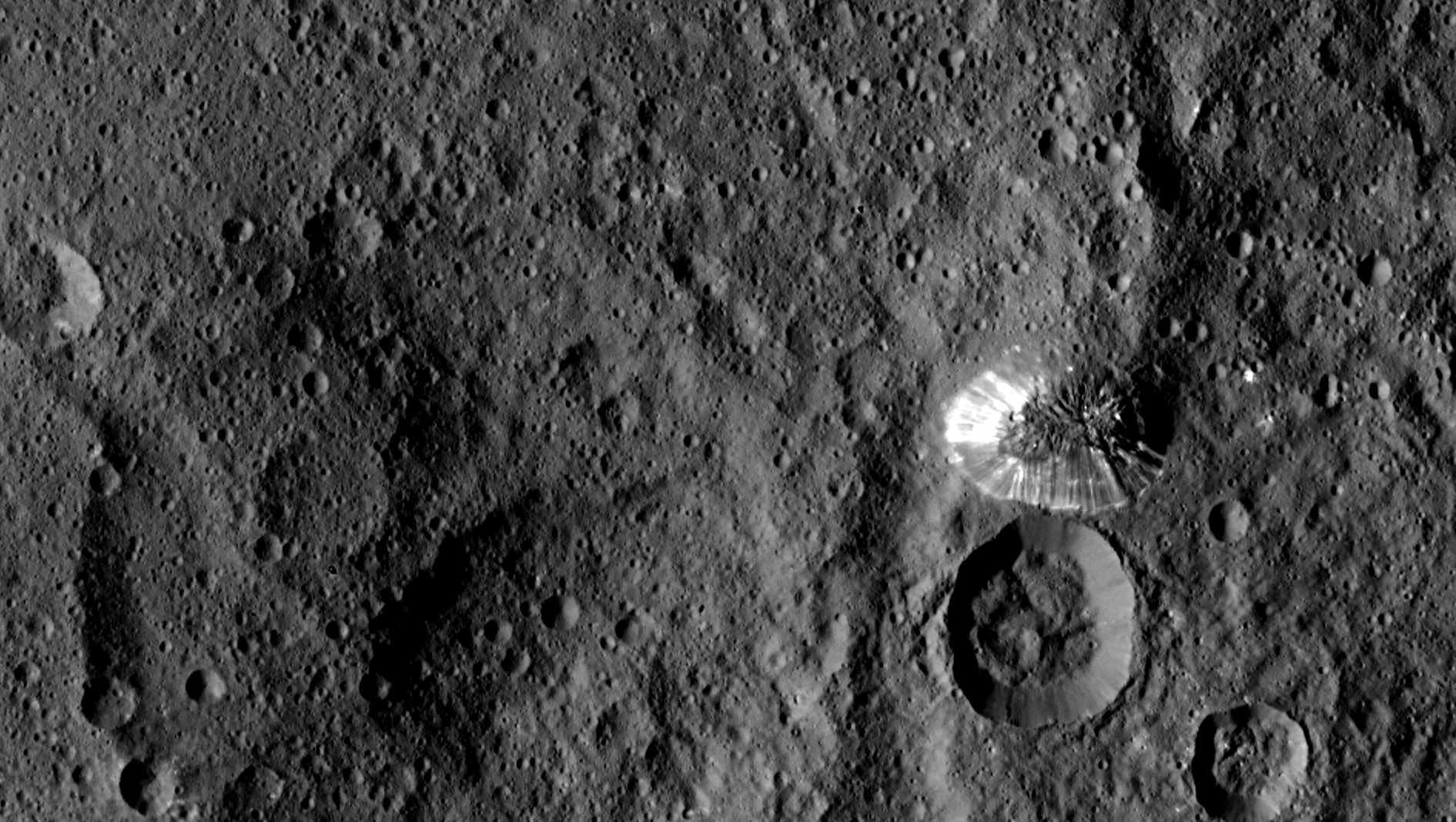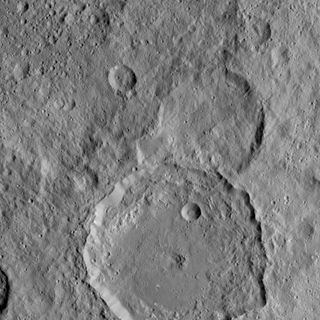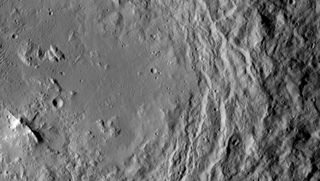'Lonely Mountain' on Dwarf Planet Ceres Shines in Jaw-Dropping Photos

A "lonely mountain" stands unaccompanied on the icy gray surface of the dwarf planet Ceres, in amazing new photographs from NASA's Dawn spacecraft.
The mountain, with an altitude of 21,120 feet (6,437 meters), is one of many gorgeous features captured in the new images, which Dawn took on Aug. 19. Shining craters, sloping ridges and round dimples also cover the surface of Ceres, the largest object in the asteroid belt. We at Space.com combined the photos into a video that explores the new Ceres images in detail.
Dawn currently orbits Ceres at an altitude of 915 miles (1,470 kilometers), but in October, the probe will start spiraling down to an orbit just 230 miles (375 km) above the surface. So Dawn will soon be sending back even higher-resolution images of the icy body's surface. [See more amazing photos of dwarf planet Ceres]
The new images offer a closer look at some of the mysterious aspects of Ceres' surface, including the massive Gaue crater, which is 52 miles (84 km) in diameter. The images feature a resolution of about 450 feet (140 m) per pixel. Additionally, the pictures show "narrow, braided features" on the surface, according to a statement from NASA.

The images show that the "lonely mountain" is not part of any visible mountain range (hence its name). Its base is very sharply defined, and there is "almost no accumulated debris" at the mountain's base, according to the NASA statement. Dawn also spied a smaller mountain ridge, near the center of Urvara crater.

Ceres is about 590 miles (950 km) wide and holds joint status as an asteroid and a dwarf planet. In Dawn's current orbit, the probe takes 11 days (or 14 orbits around Ceres) to create a complete map of the dwarf planet's entire surface. Dawn will map the surface of Ceres six times in the next two months, NASA officials said.
This extensive imaging allows scientists to model the surface in 3D, and instruments on board the spacecraft are collecting information about the distribution and composition of materials on Ceres' surface. Of particular interest are the mysterious white spots seen on Ceres. (To cast your vote as to what the white spots might be made of, go to NASA's online poll.)
Get the Space.com Newsletter
Breaking space news, the latest updates on rocket launches, skywatching events and more!
Dawn's instruments are also studying Ceres' gravitational field, making measurements that will be essential in planning the spacecraft's dip down to a lower orbit in October.
The $466 million Dawn spacecraft left Earth in September 2007 and orbited the massive asteroid Vesta for 14 months in 2011 and 2012. The probe arrived at Ceres on March 6, 2015.
Follow Calla Cofield @callacofield.Follow us @Spacedotcom, Facebook and Google+. Original article on Space.com.
Join our Space Forums to keep talking space on the latest missions, night sky and more! And if you have a news tip, correction or comment, let us know at: community@space.com.

Calla Cofield joined Space.com's crew in October 2014. She enjoys writing about black holes, exploding stars, ripples in space-time, science in comic books, and all the mysteries of the cosmos. Prior to joining Space.com Calla worked as a freelance writer, with her work appearing in APS News, Symmetry magazine, Scientific American, Nature News, Physics World, and others. From 2010 to 2014 she was a producer for The Physics Central Podcast. Previously, Calla worked at the American Museum of Natural History in New York City (hands down the best office building ever) and SLAC National Accelerator Laboratory in California. Calla studied physics at the University of Massachusetts, Amherst and is originally from Sandy, Utah. In 2018, Calla left Space.com to join NASA's Jet Propulsion Laboratory media team where she oversees astronomy, physics, exoplanets and the Cold Atom Lab mission. She has been underground at three of the largest particle accelerators in the world and would really like to know what the heck dark matter is. Contact Calla via: E-Mail – Twitter
Most Popular

